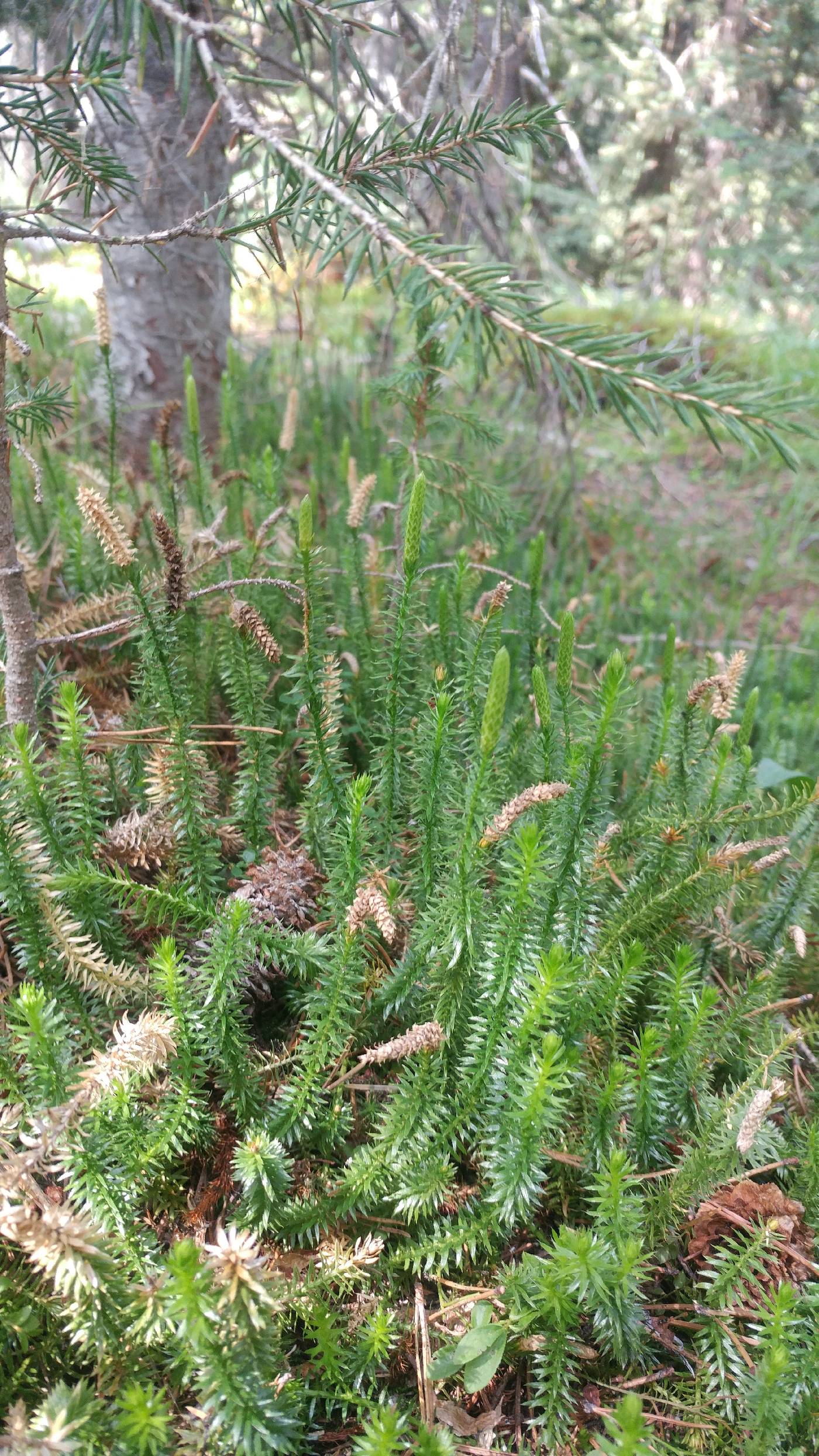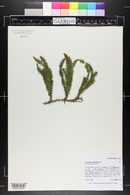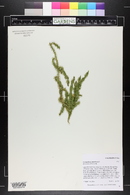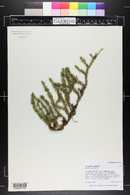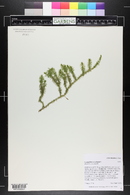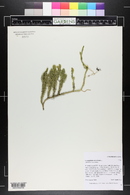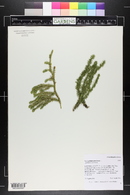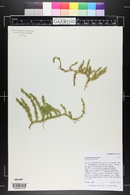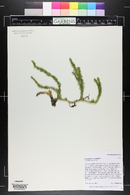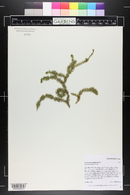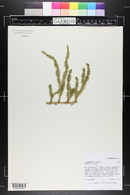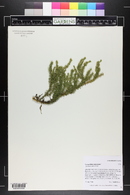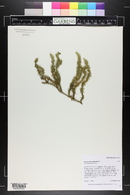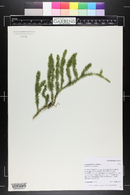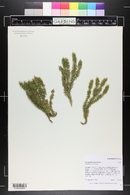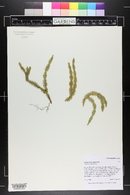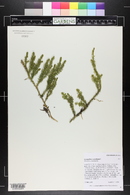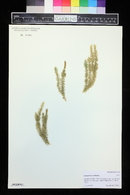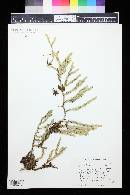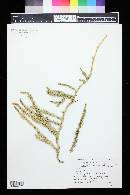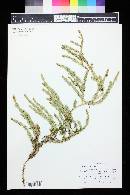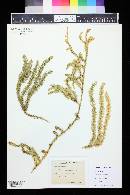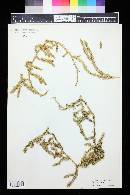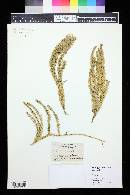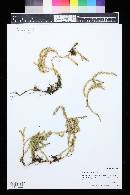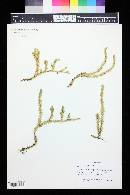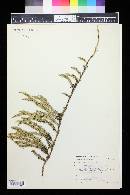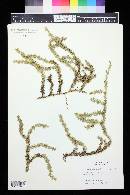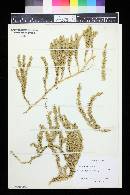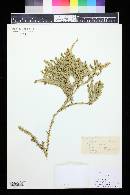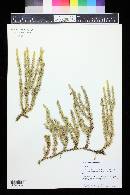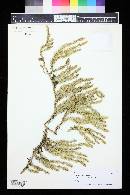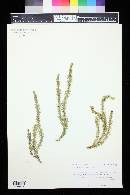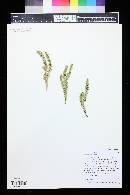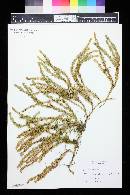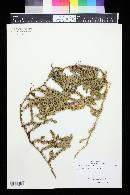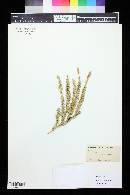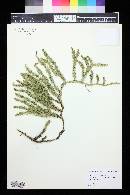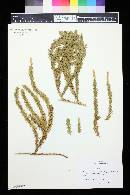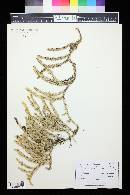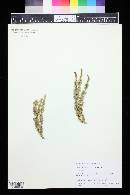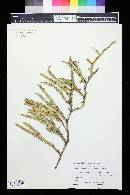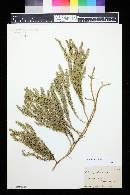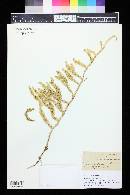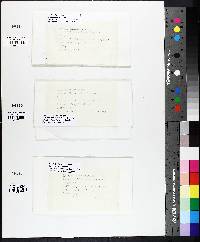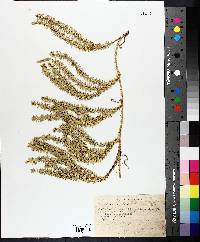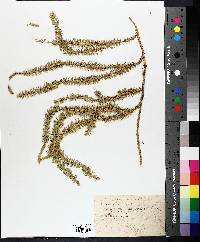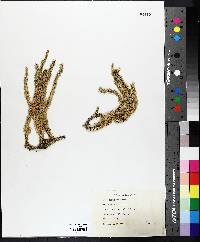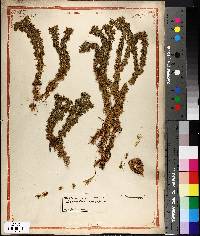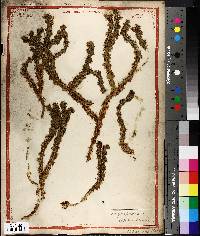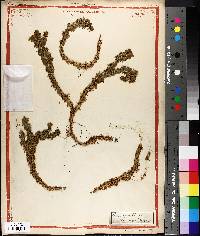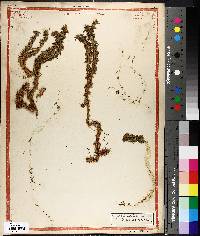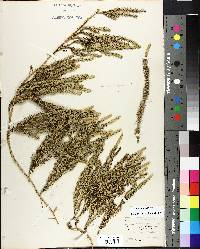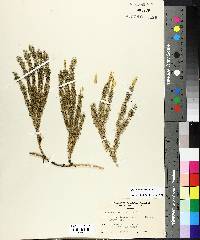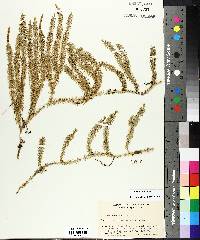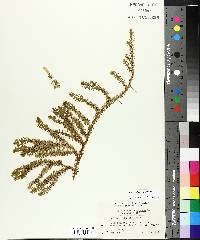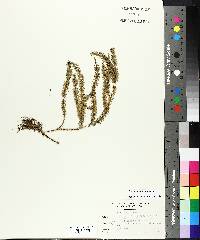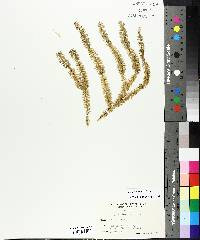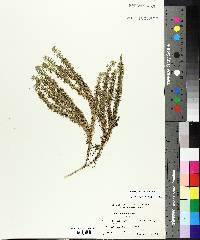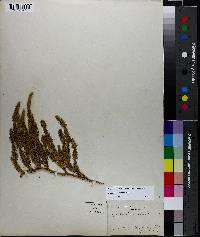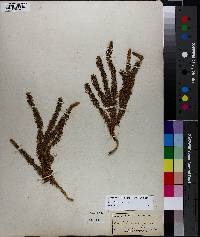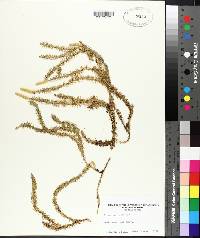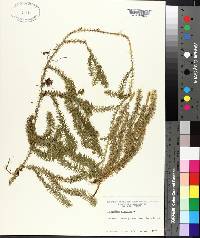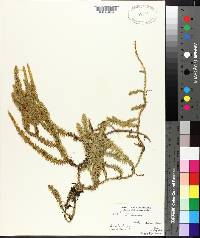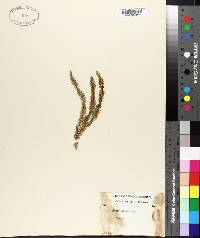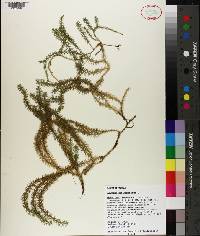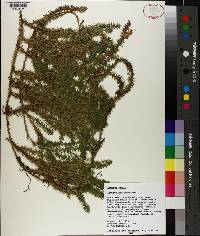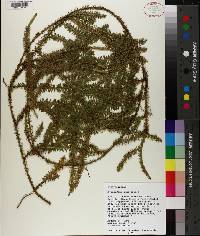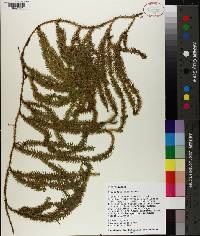Spinulum annotinum
|
|
|
|
Family: Lycopodiaceae
Interrupted Club-Moss, more...stiff clubmoss, clubmoss, stiff club moss
[Lycopodium annotinum L., moreLycopodium annotinum subsp. annotinum L., Lycopodium annotinum subsp. pungens (La Pylaie) Hultén, Lycopodium annotinum var. acrifolium Fern., Lycopodium annotinum var. annotinum L., Lycopodium annotinum var. pungens (La Pylaie) Desv., Lycopodium dubium Zoega] |
Horizontal stems on substrate surface. Upright shoots clustered, mainly unbranched or sparsely branching mainly at base, 1.2--1.6 cm diam.; annual bud constrictions abrupt and conspicuous. Lateral branchlets few and like upright shoots but annual bud constrictions absent. Leaves spreading to reflexed, dark green, linear-lanceolate, (2.5--)5--8 X 0.6--1.2 mm; margins closely and shallowly dentate mainly in distal 1/2; apex sharply pointed, lacking hair tip. Strobili solitary, sessile on shoots, 15--30 X 3.5--4.5 mm. Sporophylls (1.5--)3.5 X 0.7(--2) mm, abruptly narrowed to pointed tip. 2 n = 68. Swampy or moist coniferous forests, mountain forests, and exposed grassy or rocky sites; 0--1850 m; Greenland; St. Pierre and Miquelon; Alta., B.C., Man., N.B., Nfld., N.W.T., N.S., Ont., P.E.I., Que., Sask., Yukon; Alaska, Ariz., Colo., Conn., Idaho, Ky., Maine, Md., Mass., Mich., Minn., Mont., N.H., N.J., N.Mex., N.Y., N.C., Ohio, Oreg., Pa., R.I., Tenn., Utah, Vt., Va., Wash., Wis., Wyo. This widespread and common club-moss has been divided into various forms or varieties, some of which have been treated as species. Present evidence supports the hypothesis that these are environmentally induced forms, the most distinctive of which has been called Lycopodium annotinum var. alpestre C. Hartman, with leaves only 2.5--6 mm, very leathery, entire-margined, and appressed. Plants intermediate between this and L . annotinum var. annotinum are a form that has been called var. pungens (Bachelot de la Pylaie) Desvaux, an invalid name. Both are found in cold, bleak, northern or high elevation habitats. The species should be studied in detail to determine whether it contains any groups that should be recognized taxonomically. Lycopodium clavatum group
Prostrate stems superficial, elongate, simple or sparsely branched, 1.5-2.5 mm thick, sparsely leafy, the lvs of the lower ranks twisted; erect stems simple or 1-2-forked, 0.5-3 dm, the lvs firm, 5-11 mm, linear-subulate or linear-oblanceolate, spinulose-tipped, 8- ranked, subverticillate, with 4 lvs per whorl; cones terminal, sessile, 1.5-4 cm, 4.5-7.5 mm thick; sporophylls yellowish, broad-based, acuminate, the margins hyaline and erose; sporangia reniform, 1.5 mm wide; spores 28-36 microns in diameter, the sides convex, the commissural faces smooth, the outer open-reticulate, the commissures not in furrows; 2n=68. Acid, moist to dry soil, often in coniferous woods; circumboreal, s. to N.J. and Minn., and in the mts. to Va. and W.Va. Gleason, Henry A. & Cronquist, Arthur J. 1991. Manual of vascular plants of northeastern United States and adjacent Canada. lxxv + 910 pp. ©The New York Botanical Garden. All rights reserved. Used by permission. |

